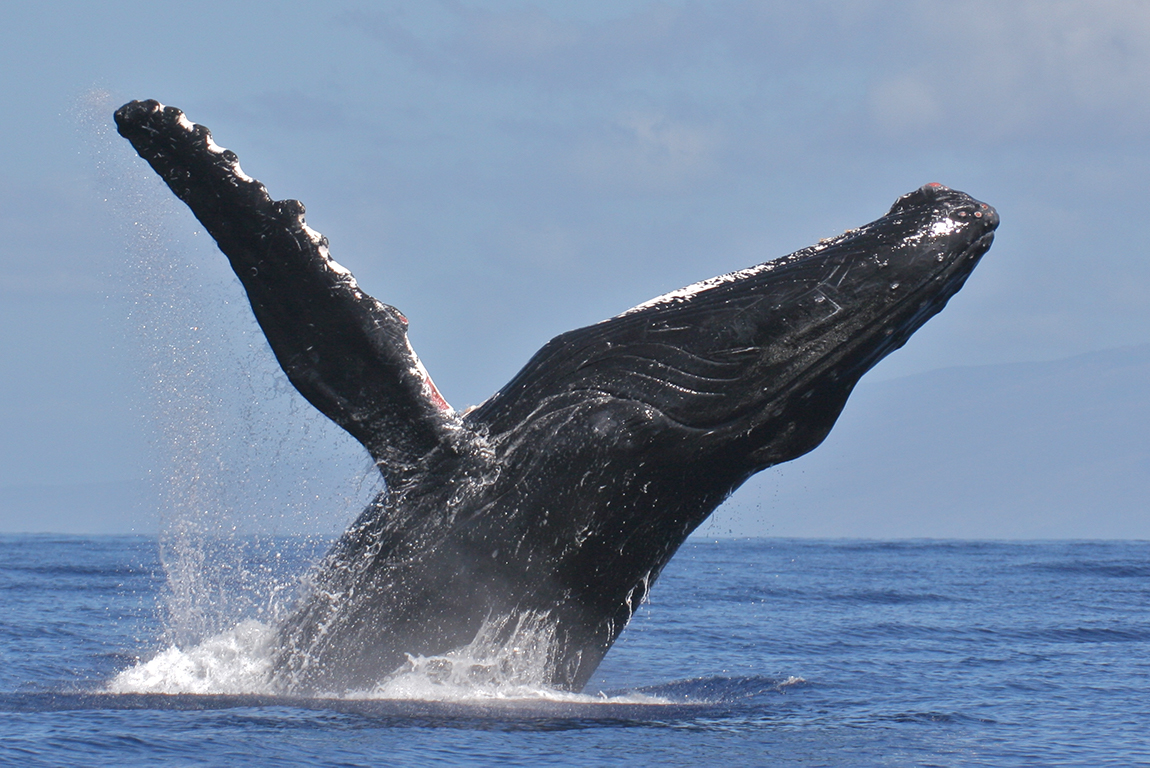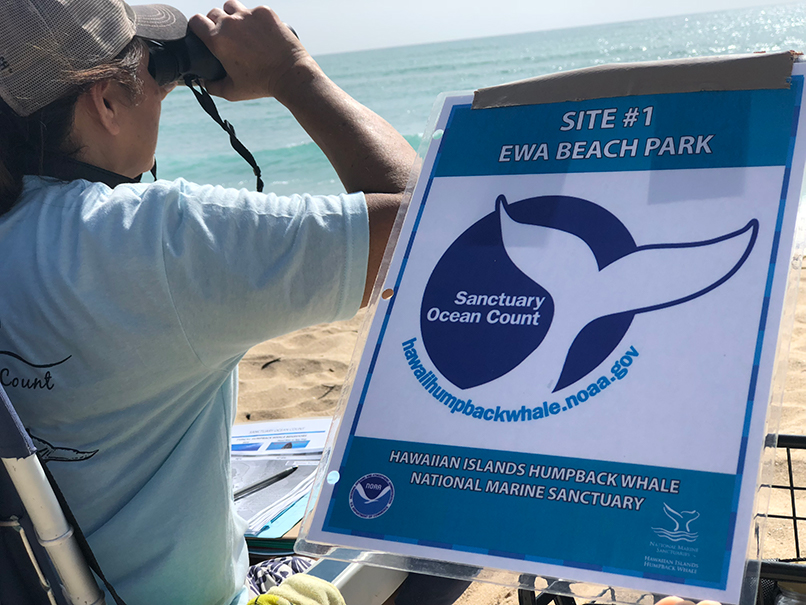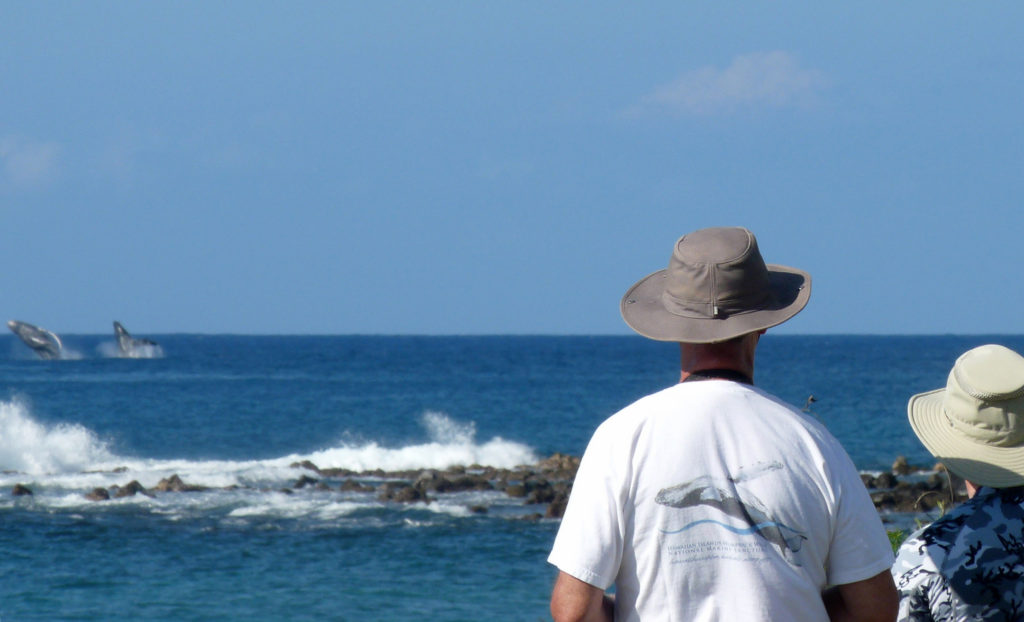
Recapping the 2018 Sanctuary Ocean Count
This past winter, NOAA’s Sanctuary Ocean Count (Ocean Count) took place within Hawaiian Islands Humpback Whale National Marine Sanctuary (HIHWNMS), with a total of 1,648 volunteers participating over three events. Ocean Counts are held on the last Saturday of January, February, and March during peak whale watching season, and offers a great opportunity for the public to learn about humpback whale populations, distribution, and behaviors while being involved in an important citizen science effort. Volunteers record whale sightings and behaviors so that the data can be compiled by the sanctuary and, in combination with other data sources, be leveraged by scientists to make inferences about humpback whale population trends over time. HIHWNMS is an ideal place to host a volunteer effort like Ocean Count, with over 1,300 square miles of protected waters encompassing sea between Kauai, Oahu, Molokai, Maui and Lanai islands.

Photo courtesy of NOAA
The first count took place on January 27, 2018 with a total of 557 volunteers participating across islands. These volunteers recorded 1,205 whale sightings that day, while conducting public outreach that engaged 676 people. The second count took place on February 24, 2018 with 649 volunteers spotting 867 whales, and reaching 690 members of the public. The last count took place on March 31, 2018 with 442 volunteers, reaching 689 members of the public and sighting 206 whales for the day. Across these three days, the total number of volunteers clocked in at 1,648, with a total of 2,278 whales spotted and 2,055 members of the public reached.

Photo Credit: Bruce Parsil/NOAA
It is important to note that the data collected from the project only provides a glimpse into Hawaii’s humpback whale populations. Sightings during Ocean Count only provide a snapshot in time and are dependent on many variables. These include habitat, weather conditions, elevation, and potential duplication of recording the same whales within a different time period at the same site or at a nearby site. Ocean Count data contributes to the larger pool of data collected by means of acoustic receivers, transect surveys, photo ID analysis, and boat and shore station observations, which allows for a more comprehensive picture of humpback whales in sanctuary waters and beyond. This, along with the citizen science and public outreach, is what makes Ocean Count so significant.
